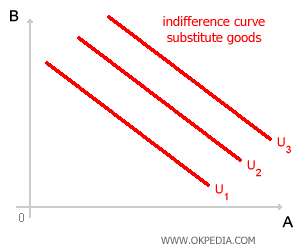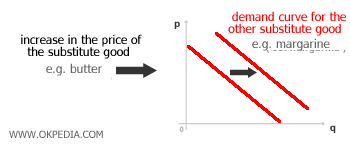Substitute Goods
Substitute goods are economic goods that satisfy the same need for consumers, who are indifferent when choosing between them. A common example of substitute goods is butter and margarine. These goods are also referred to as succedaneous goods. When two goods are perfect substitutes, the consumer’s indifference curve is characterized by a constant marginal rate of substitution. As a result, the graphical representation of the indifference curve for two substitute goods appears as a straight line.

The substitutability of goods allows a consumer to opt for one product (e.g., butter) or another (e.g., margarine) to meet the same need. The rate of substitution between the two goods might be one-to-one or different. What defines perfect substitutability isn’t the specific ratio but the consistency of the marginal rate of substitution. Substitutability is complete in the case of perfect substitutes. Additionally, when dealing with substitute goods, the market demand for each product depends not only on its own price but also on the price of its substitute.

For two substitute goods, A and B, an increase in the price of good A (e.g., butter) (PA) leads to higher demand for good B (e.g., margarine), provided the price of B (PB) remains constant. On a graph, this is reflected by a rightward shift in the demand curve for good B. Conversely, a decrease in the price of A (PA) will reduce the demand for substitute B, causing its demand curve to shift left, assuming the price of B (PB) stays the same.
